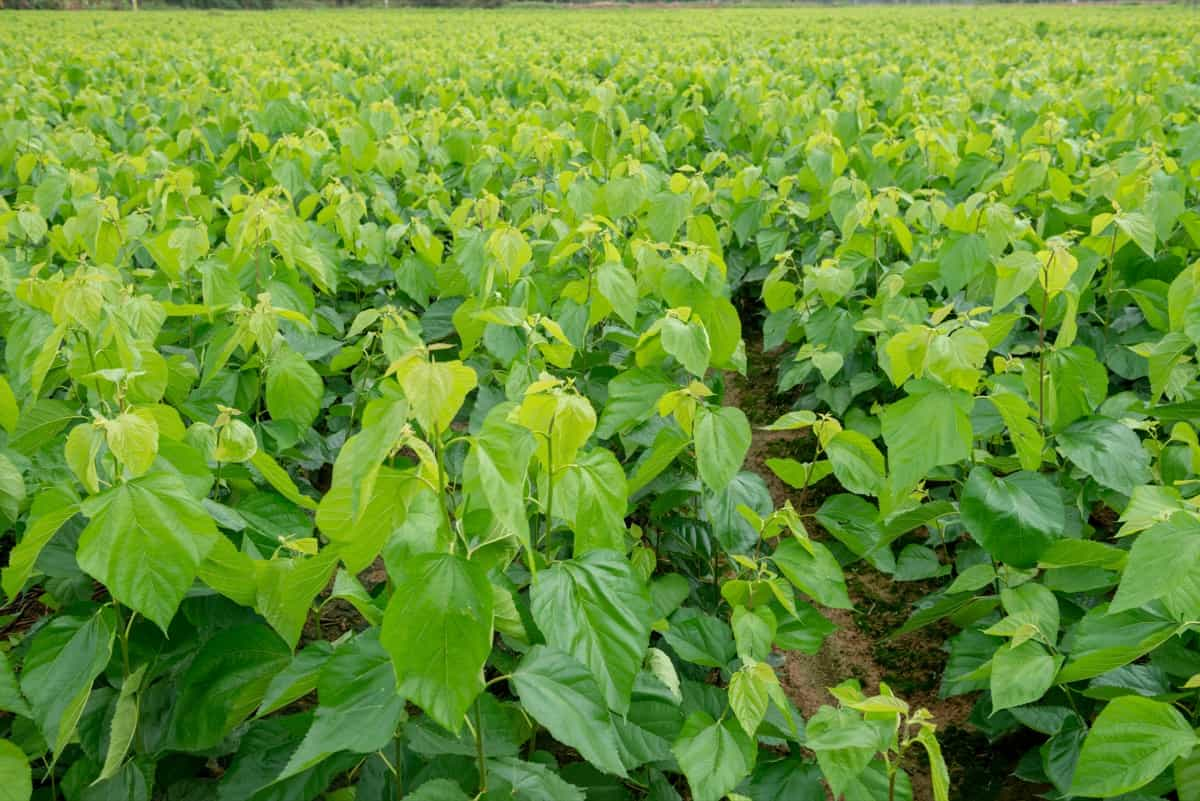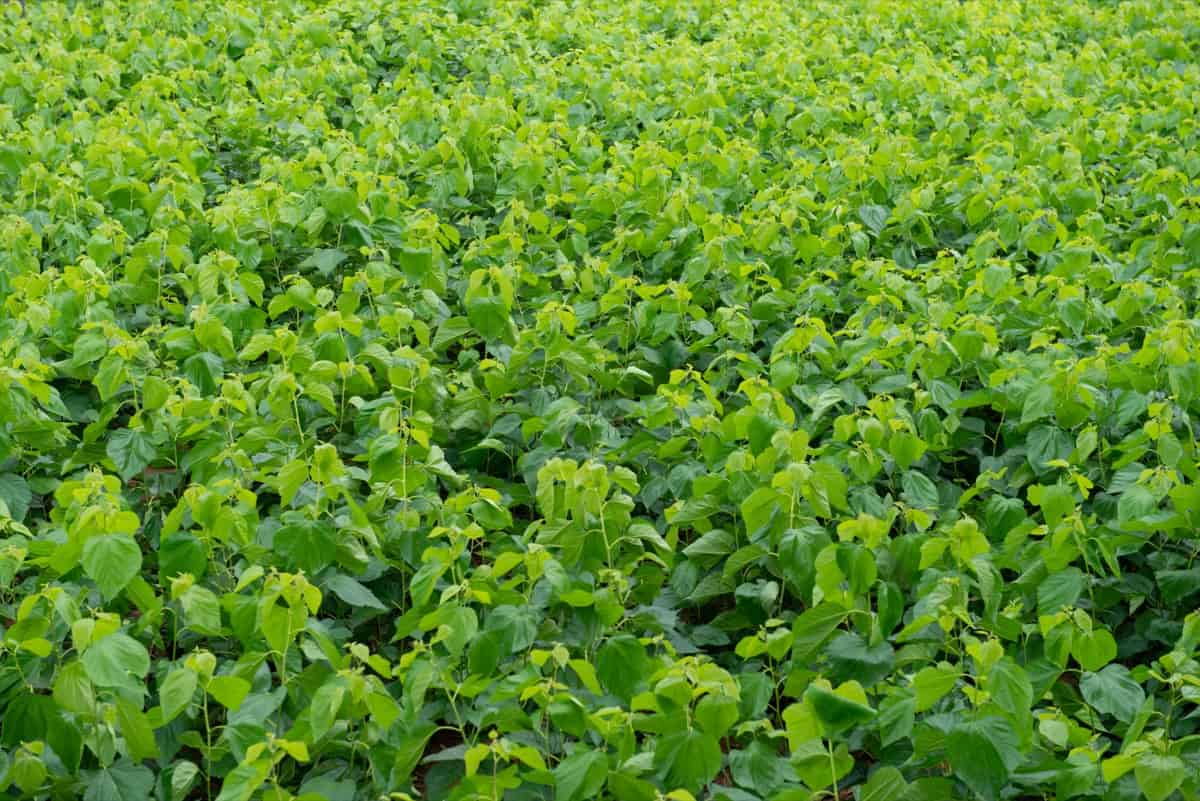In sustainable and cost-effective livestock feeding alternatives, Mulberry Leaf Fodder has emerged as a promising solution. Known for their rich nutritional value and widespread availability, Mulberry Leaves are increasingly utilized as Animal Feed, gaining particular favor amongst Cattle farmers.

As the global livestock industry continues to search for affordable and sustainable feeding methods, the mulberry, a member of the Moraceae family, is proving to be a remarkable alternative. From pigs to goats, and rabbits to sheep, a wide range of Animals Eat Mulberry Leaves, recognizing its inherent goodness and nutritious content. This article explores the potential of Mulberry Leaves as Cattle Feed for Cows, Goats, Rabbits, and other livestock and how Mulberry Leaf Meal can serve as a Sustainable Feed Ingredient.
Mulberry Leaf Fodder for Livestock
Mulberry Leaves are versatile and can be used as feed for a broad spectrum of livestock, including but not limited to Cattle, Pigs, Goats, Rabbits, and Sheep. Given their robust nutritional profile, Mulberry Leaves for Cattle and other livestock can supplement and often replace traditional feed, leading to healthier animals and more efficient farms. Mulberry Leaves for Cows are especially beneficial, given that cows have a large diet and can significantly benefit from the superior nutritional content of these leaves.
Benefits of Mulberry Leaf Fodder
Mulberry Leaves as Animal Feed offer an array of benefits. Packed with high protein levels, beneficial amino acids, essential vitamins, and minerals, these leaves provide well-rounded animal nutrition. Mulberry Leaves for Rabbits, for example, not only fulfill their dietary requirements but also contribute to improved digestion and better overall health. Similarly, Mulberry Leaves for Goats and Sheep provide a rich protein source for their growth, reproduction, and milk production.
Cost-effectiveness of Mulberry Leaf Fodder
In the era of rising feed costs, the economic viability of Mulberry Leaf Fodder stands out. Farmers find Mulberry Leaves a cost-effective feed alternative because of the ease of growing mulberry trees and their prolific leaf production. They also require minimal maintenance and thrive in various soil types and climates, reducing costs. The use of Mulberry Leaves for Pigs exemplifies this cost-effectiveness as pigs consume large amounts of feed, and supplementing or replacing part of their traditional feed with mulberry leaves can significantly cut costs.
Nutritional Value of Mulberry Leaf Fodder
The Nutritional Value of Mulberry Leaves for Poultry and other livestock is another compelling reason for its growing adoption. Mulberries provide a rich source of crude protein, vitamins (A, B1, B2, C), and essential minerals like iron, calcium, and magnesium, making them a balanced feed choice. Mulberry Leaf Meal as a Sustainable Feed Ingredient ensures that livestock gets a balanced diet, contributing to improved growth, productivity, and overall health.
Feeding Mulberry Leaves to Livestock
In terms of practicality, feeding Mulberry Leaves to livestock is straightforward. Leaves can be offered fresh, dried, or in mixed feed, depending on the animal and its dietary requirements. Whether it’s Mulberry Leaves for Pigs, Goats, Rabbits, or Cattle, the flexibility in feeding options further enhances its viability as a livestock feed.
Mulberry Leaves as Livestock Feed
As the world continues to search for sustainable and economically viable solutions for livestock feed, Mulberry Leaves as Livestock Feed present a unique opportunity. Given their nutritional value, affordability, and adaptability, mulberries are finding their way into the diets of a wide range of livestock, from Cattle to Pigs, Goats to Rabbits, and even Sheep.
Sustainable Livestock Feeding With Mulberry Leaf Fodder
In the context of sustainability, Mulberry Leaf Fodder offers a significant advantage. Mulberry trees are fast-growing, drought-resistant, and adapt well to various climates, making them a sustainable option for livestock feeding. Using Mulberry Leaf Meal as a Sustainable Feed Ingredient reduces the dependence on traditional, often environmentally damaging, feed sources, marking a positive step towards more sustainable livestock farming practices.
Mulberry Leaf Fodder Production Techniques
Producing Mulberry Leaf Fodder involves straightforward techniques. The trees can be grown from cuttings, seeds, or grafts and, once established, require minimal maintenance. Regular pruning helps promote leaf growth, providing a consistent supply of Mulberry Leaves for Cows, Goats, Sheep, Pigs, and other livestock.
In case you missed it: Ultimate Guide to Grass Fodder Crops: Hybrid Napier, Guinea Grass, Para Grass, and Blue Buffel Grass

Mulberry Leaf Fodder as a Natural Feed Supplement
With the increasing focus on natural and chemical-free farming practices, Mulberry Leaf Fodder as a Natural Feed Supplement is a welcome development. Unlike commercial feeds, mulberry leaves are free from synthetic additives and harmful chemicals, making them safer for animals and humans who consume animal products. They are also rich in antioxidants, which play a significant role in maintaining animal health.
Economic Advantages of Using Mulberry Leaf Fodder
Beyond their nutritional benefits, the Economic Advantages of Using Mulberry Leaf Fodder are substantial. Reduced feed costs, healthier animals, higher productivity, and less dependency on commercial feeds can translate into significant savings for farmers. Furthermore, given that mulberry trees are perennial, the costs of planting and maintaining them are offset by the years of leaf production they provide, making them a truly economical choice for livestock feeding.
Incorporating Mulberry Leaf Fodder into Livestock Diet
Implementing Mulberry Leaves as a regular part of the livestock diet can be a gradual process. It can begin by supplementing the feed with a small percentage of Mulberry Leaves, gradually increasing the proportion as animals become accustomed to it. The process can be tailored to each type of livestock, whether it’s Mulberry Leaves for Cows, Pigs, Goats, Rabbits, or Sheep. For instance, Mulberry Leaves for Goats and Sheep, known for their browsing habits, can be provided directly from the tree, while for other livestock, leaves might be chopped and mixed with other feed.
Challenges and Solutions in Using Mulberry Leaf Fodder
While using Mulberry Leaves as Animal Feed presents significant benefits, it also poses certain challenges. One of the main issues is the seasonal availability of leaves. However, this can be overcome by creating silage or hay during periods of abundance for use in lean periods. Another challenge is the potential resistance from livestock during the initial stages of feed transition. This can be mitigated by gradually introducing Mulberry Leaves into their diet and mixing them with familiar feeds until the animals get accustomed.
In case you missed it: Ultimate Guide to Tree Fodder Crops: Subabul, Glyricidia, and Sesbania

Conclusion
Mulberry Leaf Fodder presents a valuable alternative in the world of livestock feeding. Its rich nutritional value, cost-effectiveness, and compatibility with sustainable farming practices make it a viable option for many livestock, including Cattle, Pigs, Goats, Rabbits, and Sheep. Despite certain challenges, solutions make it a practical and beneficial feed source.
As the livestock industry continues to seek economically efficient and environmentally friendly methods, Mulberry Leaves as Animal Feed signify a step in the right direction. It underlines that sustainable livestock farming, with nature’s bounties such as mulberry leaves, is a possibility and a path forward.
- Feed Your Flock for Less: Top 10 Tips to Save on Chicken Feed
- Ultimate Guide to Ossabaw Island Hog: Breeding, Raising, Diet, and Care
- Hatching Answers: The Top 10 Reasons Your Chickens Aren’t Laying Eggs
- Eggs and Economics: Breaking Down the Cost of Raising Backyard Chickens
- Defend Your Greens: Proven Methods to Keep Iguanas Out of Your Garden
- Ultimate Guide to Cinnamon Queen Chicken: A Comprehensive Guide for Beginners
- Ultimate Guide to California Tan Chicken: Breeding, Raising, Diet, Egg-Production and Care
- Ultimate Guide to Marsh Daisy Chicken: Breeding, Raising, Diet, and Care
- 10 Types of Chicken Farming Businesses You Can Start for Profits